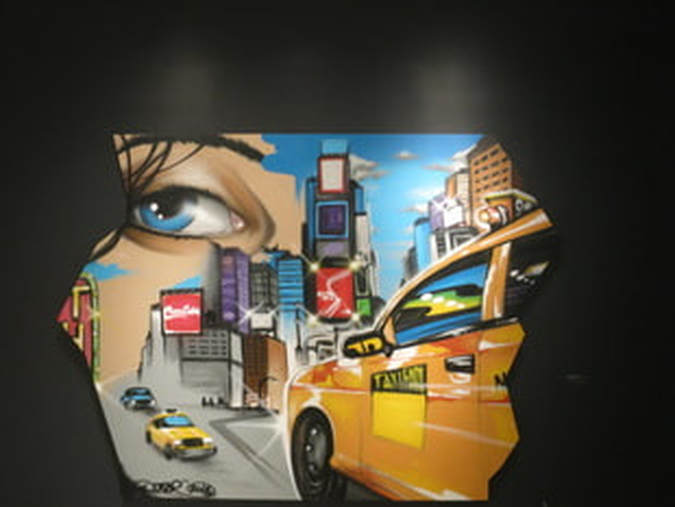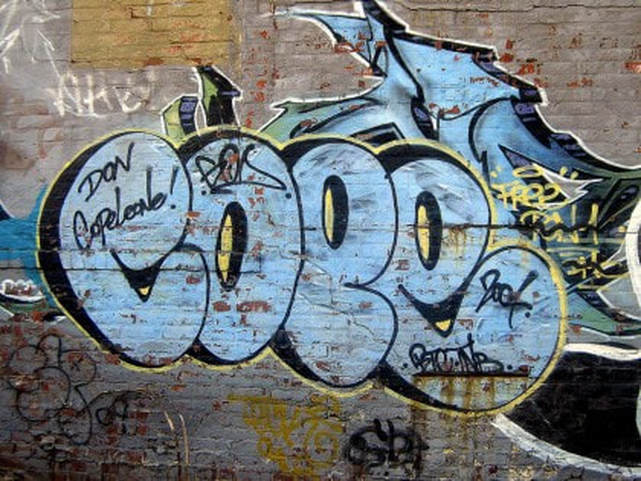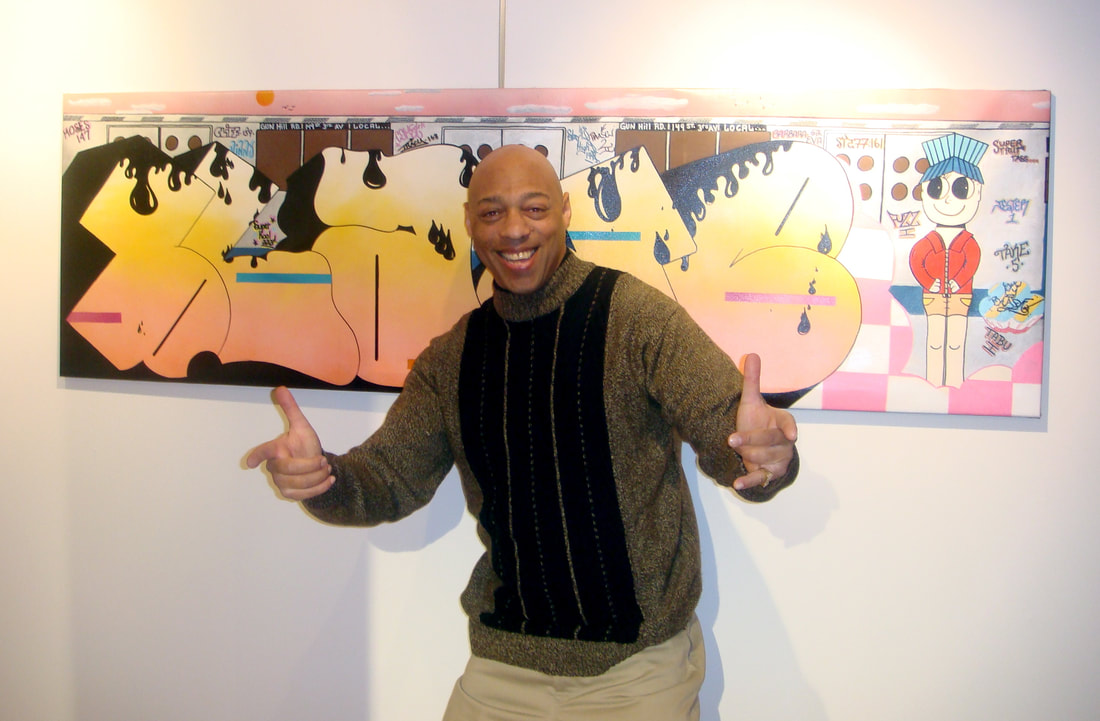Fast forward to today, and this former vandalism is now revered as urban art! Street Art, the new modern term used to describe this distinct and recognizable artistry genre, is now widely accepted, with many of these early creators having become legends for the art style they originated, which have inspired generations of young street artists worldwide.
Hailing from all around the New York City area, several of these graffiti trailblazers burst on the scene from the South Bronx in the 1970’s and are considered legends for the design form. What’s more, these creative individuals have gone on to have lucrative careers and with high profile recognition in the mainstream.
I first became familiar with Daze, also known as Chris Ellis, during my recent visit to the Museum of the City of New York. One might never have guessed that Daze, a prolific canvas artist, with gallery exhibitions around the world, including Monte Carlo, Hong Kong, Paris, New York, Beijing, Chicago, and Singapore began his career by painting pieces and drawing tags on subway trains and walls in Brooklyn and the Bronx.
Daze’s artistic education was not limited to his accomplishments as an exterior graphic designer, but was also formally trained at the respected New York High School of Art and Design. He successfully transitioned from street artist to paint on canvases in the early 1980’s, with his first group show, “Beyond Words” held at the Mudd club in New York in 1981, showing alongside artists such as Jean Michel Basquiat and Keith Haring,
No stranger to the Bronx, his first solo show was featured at Fashion Moda, a gallery in the Bronx, a year later. From there, his career took off and today his art is on display as part of the permanent collections of such prestigious worldwide museums that include The Museum of Modern Art in New York, The Brooklyn Museum, The Museum of the City of New York, The Groninger Museum in the Netherlands and The Ludwig Museum in Aachen, Germany, as well as the private collections of of Madonna, Eric Clapton and others.
A native from the Kingsbridge section of the Bronx, Fernando Carlo, better known as Cope 2, has been a grafitti artist tagging trains, walls, and trucks for nearly four decades. He was catapulted on to the international scene for his unique and identifiable style of bubble letter art and "throw up" style when his works were commissioned by mega corporations that include Time Magazine, retail giant Footlocker and footwear brands Adidas and Converse. His work has also been featured in Mark Ecko’s popular video games, Grand Theft Auto IV and Gettin Up.
The "throw up" is usually something between the tag and a bomb, where the outline is filled with one layer of color. This method was very popular in the 80’s since the police were always onto the graffiti artist, and they did not have the luxury of time to complete their works in detail, so a quick delivery was a perfect solution.
Since the late 1980’s Cope2's artwork has been featured in museum and gallery exhibitions throughout the world. Today, he still paints legally in the streets and collaborates with other artists.
Steve D. Ogburn, better known as Blade, has been named the King of Graffiti. Beginning with his first train at the age of fifteen, Blade has painted over five thousand trains with his unique style of street art. He initially used walls of abandoned or squatted buildings, the bus and Metro of New York for his "canvas" in the early 1970's.
Blade founded the TC5 (Crazy five), one of the most famous groups in the history of graffiti, which worked on the metro lines 2 and 5 running from New York's Bronx to Brooklyn. As a urban artist, he is best known for his adornment of whole cars, making Blade an icon in the street art world.
In 1984, he stopped painting trains and moved onto art creations on canvas, using a variety of mixed media including spray paint, markers and acrylic, which brought him success with exhibitions in some of the most prestigious museums and galleries worldwide. Among these are the Whitney Museum of American Art, New York; Rock and Roll Hall of Fame and Museum, Cleveland; the Musée national des Monuments Français, Paris; the Stedelijk Museum, Amsterdam; the Museum of Contemporary Art (MOCA), Los Angeles; the Groninger Museum in the city of Groningen in the Netherlands, and many others.
Phase 2, born Lonny Wood, is from the Bronx and along with a number of other graffiti artists, attended DeWitt Clinton High School. He began leaving his mark in late 1971 under the name Phase 2. According to Richard Christen's book Hip Hop Learning: Graffiti As An Educator of Urban Teenagers, Phase 2 believed that tagging (a term used in the graffiti world) provided disadvantaged urban teens "the only significant vehicle to represent their 'existence."
Phase 2 is credited as the first-ever street artist to use the "bubble letter" or "softie", a style of writing which would become extremely influential and is considered a "giant leap" in the art form. These puffy, marshmallow-like letter were soon copied by other artists who added their own variations.
Ever an innovator of outdoor art style, Phase 2 quickly embellished on his original form, creating and naming dozens of varieties of softies such as "phasemagorical phantastic" (bubble letters with stars), "bubble cloud", and "bubble drip."
It's interesting to note that Phase 2 had a significant influence and was a prominent figure on the South Bronx Hip-Hop scene in the early 1980s with two rap singles. He continues to be referenced in hip-hop songs.
Today, he is recognized as one of the most influential and well known New York City graffiti artists.






 RSS Feed
RSS Feed